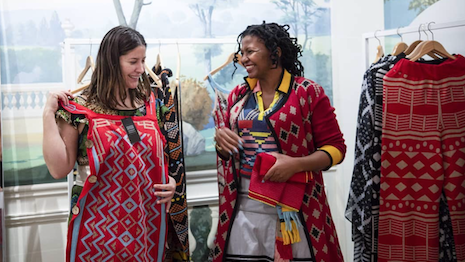 Image credit: Luxury Connect Africa
Image credit: Luxury Connect Africa
CAPE TOWN, South Africa – While Africa presents a valuable opportunity for luxury brands looking to tap into new markets, it cannot be viewed as a singular entity.
Not only does the African continent include different regions with their own sub-cultures, but the wider African diaspora is another consideration brands must take into account. Speaking at the Condé Nast International Luxury Conference on April 10, the founder of Luxury Connect Africa discussed how luxury brands can harness the Afrocentric opportunity.
“Africans today have many faces,” said Uche Pézard, CEO of Luxe Corp. Group and founder and chief curator of Luxury Connect Africa. “Africans are not homogenous.”
Afrocentric
Ms. Pézard believes that many brands and consumers have misconceptions about the African continent and its population.
The reality is Africa has one of the youngest populations in the world with a growing segment of wealthy consumers. This is one reason why the market can no longer be ignored by luxury brands.
Urbanization is also rapidly taking place in several countries, making cities including Nairobi and Cape Town into important destinations.
Additionally, African consumers have embraced mobile technology, enabling luxury marketers to more easily engage with affluents through social media.
In a keynote address at the 2018 Condé Nast International Luxury Conference, Ms. Pézard touched on similar themes conquering Afrocentric luxury.
Luxury firms looking to enter or expand in Africa need to keep in mind that it is not a homogenous market.
Across Africa, there are more than 4,000 languages, with many different cultures. Eighty percent of Africa’s luxury consumers are millennials, reflective of the continent’s young population (see story).
Fashion missteps
Ms. Pézard also discussed how a brand’s lack of cultural awareness can have an impact on consumers in and out of Africa.
Even in recent months, luxury labels have faced serious accusations of blackface, showing a blindspot regarding diversity and history.
During the most recent holiday season, Italian fashion label Prada developed a series of seven creature characters that were inspired by the brand’s codes. One monkey character drew consumer complaints for resembling blackface.
Among the Pradamalia is Otto, a dark brown monkey figurine with large red lips. When Prada put out its marketing for the collection, consumers responded with accusations of racism, calling for Prada boycotts (see story).
Following the controversy, Prada has jumpstarted a new program in which it will focus on amplifying voices of color within its own company and beyond (see story).
Earlier this year, Italian fashion label Gucci pulled a sweater from its inventory in both stores and online, after it similarly received backlash in its likeness to blackface. The black sweater was fitted with a rollup collar with a cutout for the mouth, outlined in red, much like a golliwog doll known to be a symbol of racism.
After apologizing for the offense, Gucci is now launching the first initiatives in a long-term plan to amplify cultural diversity and awareness in its company, which will extend to hiring and educational programs (see story).
“The impacts of blackface on an African-American is the same as it is to me, who is not African-American,” Ms. Pézard said.
